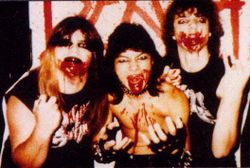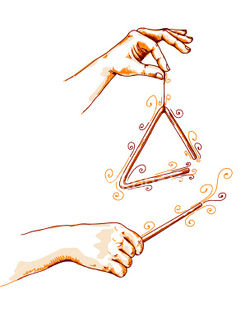Death Easy-Listening
Death easy-listening is a fusion of death metal and easy-listening music. It is often confused with easy-grind (a fusion of grindcore and easy-listening) but they are definitely not the same thing.
History[edit | edit source]
The genre was created when the members of death-metal band Opeth accidentally took a bunch of sleeping pills directly before a concert. This resulted in the sound of lacklustre guitar-work and lethargic growls. Members of the crowd (in between boos and fistfights) dubbed this "death easy-listening". After having their stomachs pumped, the band began to popularize their new genre, releasing their magnum-opus Eternal Sleep. It was a massive hit among insomniacs. There followed many imitators. Easy-listening artists decided they wanted to stop being boring and flocked to the genre. The genre has had little mainstream success - it's main market is Scandinavian massage-parlors.
Stylistic Features[edit | edit source]
Death easy-listening combines the loud angry ferocity of death metal with the smooth boringness of easy-listening (for this reason it is often confused with borecore but this genre actually evolved independently). This fusion of genres has produced a unique sound, much loved by purists and traditionalists as well as those on the cutting edge.
Instruments[edit | edit source]
The main instruments of death easy-listening include guitar, bass, drums, synthesizers. The guitars are usually down-tuned and are played quickly and violently often with lots of distortion. Usually the guitar is mixed low in the mix in order to preserve the easy-listening aspects.
Drums are rarely used and for this reason drummers are often left holding a triangle. This lead to a unique style of playing called "death triangle" in which blast beats and heavy staccatos are played softly on a triangle (or occasionally an octagon). Synthesizers are used often in this genre to provide an easy ambient backdrop or a drone. The bass is a useless instrument so nobody cares what they do with it.
Vocals[edit | edit source]
The main vocal styles employed in death easy-listening are ferocious death grunts and soothing whale song though clean vocals and elf laughter are also sometimes used. The vocals are often heavily treated with reverb in order to hide the vocalist's utter shoddiness.
Vocalisation is often so highpitched that only dogs and dolphins are able to register the sound, and make Geddy Lee sound like a rich baratone.
Lyrical Themes[edit | edit source]
The themes of death easy-listening lyrics often revolve around death (obviously) and often include references to the occult or to fluffy bunnies. Frequent references to the works of leading lights within the occult movement are often worked into the songs, including Blood, Sugar, Sex, Magick by Aleister Crowley and Weekend at Bernie's II by Fyodor Dostoevsky.
One critic said:
The idea is to create the feeling of floating gently down a river of bubble bath into a violent and painful death.
Another said:
Imagine an image of candy and puppies; but the puppies are dead and the candy is poisonous.
Sub genres[edit | edit source]
Death easy-listening has spawned numerous sub-genres during its five weeks of existence. These include:
Brutal death easy-listening[edit | edit source]
In this style of death easy-listening the drummers often play drums creating brutal slamming noises and blast beats over a gentle backdrop of ocean sounds, dolphin or whale song, or the soothing sounds of the forest.
Progressive death easy-listening[edit | edit source]
This is essentially just death easy-listening in 5/4. Sometimes ukuleles are used. The songs are often usually longer than standard songs for no apparent reason other than to feed the musicians' pomposity.
Blackened-death easy-listening[edit | edit source]
This is a fusion of death easy-listening with the themes and sound of black metal. Themes usually revolve around the occult, satanism and stanism.

